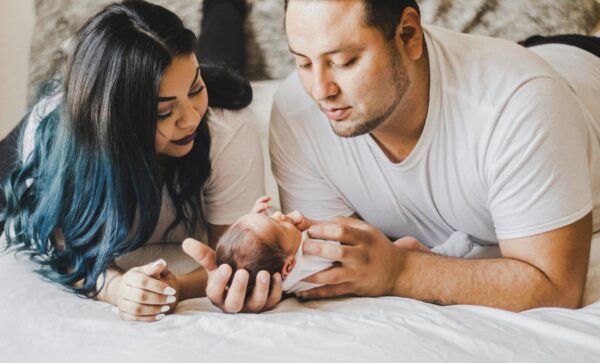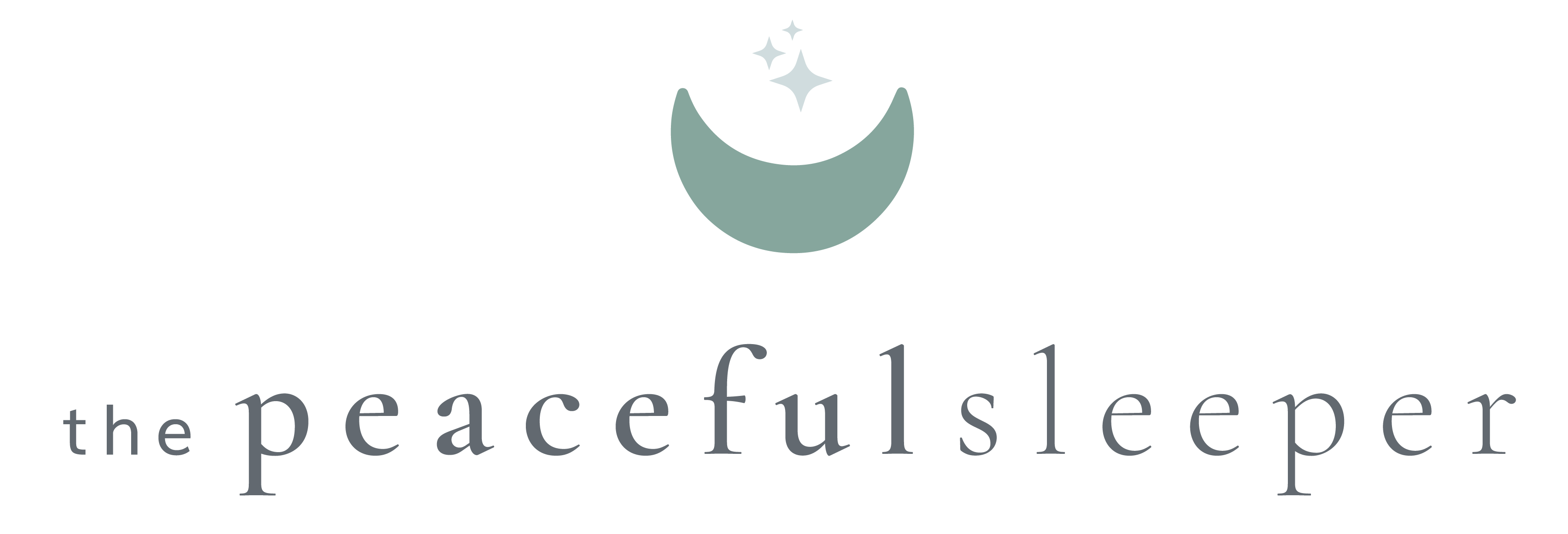You might be feeling like it’s time to set the stage for sleep training… (because right now, your “sleep training” is more like “try not to cry into the baby monitor”).
Let’s be real: those early weeks are a wild mix of magical baby snuggles, caffeine-fueled survival, and wondering why no one warned you that “sleeping like a baby” is actually an insult.
Here’s the good news: before 4 months, your baby is too young for official sleep training — the kind where you work on falling asleep independently and stretching night sleep without middle-of-the-night rocking marathons. The even better news? You can start laying the groundwork now so when you are ready, it’s a smoother transition and not a battle of wills.
And here’s the part you need tattooed on your tired parent brain:
Anything you do now to survive still helps later.
That means yes — even if your current bedtime routine is you and the baby both asleep in the recliner at 3 a.m., covered in spit-up and Oreos (yours). You’re not “ruining” them. You’re keeping them alive and loved, which is actually the point.
These are gentle, age-appropriate ways to set the stage now — and they work whether you’re a first-time parent or you’ve done this before but conveniently blacked out the memory of how exhausting newborn sleep really is.
1. Focus on Full Feeds, Not Grazing
2. Use a Consistent Pre-Sleep Routine
4. Practice Bassinet Time Daily

1. Focus on Full Feeds, Not Grazing
Think “Thanksgiving dinner” vibes, not “I just had three grapes.”
As you set the stage for sleep training in those early months, babies are snackers. They’ll take an ounce, fall asleep mid-feed, and then wake up 27 minutes later like, “Excuse me, waiter, my entrée never arrived.” While some of that is inevitable at first (their stomachs are tiny!), you can start encouraging more complete feeds when they’re ready.
Why this matters: Full feeds mean they can go longer between meals. Longer stretches between meals often translate into longer stretches of sleep. More sleep = happier baby. Happier baby = happier you.
How to help them stay awake long enough to eat:
- Gently tickle their feet or stroke their hands.
- Rub their cheek to stimulate the suck reflex.
- Break for burps halfway through — not just to relieve gas, but to wake them back up.
- If all else fails, do the world’s slowest diaper change mid-feed. (Yes, they will glare at you. Yes, they’ll thank you later.)
Even if you only get an extra half-ounce in each feeding, it adds up. And bonus — it might mean you don’t have to make quite as many middle-of-the-night bottles.
2. Use a Consistent Pre-Sleep Routine
This doesn’t need to be a full spa menu with aromatherapy, whale sounds, and eucalyptus towels. Keep it simple, keep it short, and keep it the same every time.
The goal here isn’t to bore them into sleep — it’s to create predictable cues that signal “We’re winding down, friend.” Babies are comforted by repetition. Think about how you get sleepy just hearing your favorite podcast intro — the same principle applies.
Example routine:
- Diaper change.
- Swaddle or sleep sack.
- White noise machine on.
- Quick cuddle or song.
- Down into bassinet/crib.
That’s it. Your baby will eventually learn: “Ohhh, this song-and-dance means I’m about to pass out.” And no, they don’t need to be drowsy-but-awake every single time yet — right now, this is just about association.

3. Pause Before Picking Up
This is the hardest step for most parents as they set the stage for sleep training because your reflexes are faster than a NASCAR pit crew when you hear your baby make a noise. But here’s the thing — not every grunt, squeak, or full-on pterodactyl screech means they’re actually awake or hungry.
Sometimes they’re just:
- Adjusting positions.
- Passing gas (with the drama of a Shakespearean death scene).
- Dreaming about milk.
Give it 30–60 seconds before swooping in. If they resettle, congrats — you just gave them a tiny opportunity to practice self-soothing. This is not “cry it out” — this is “let’s see if you really need me or just forgot how to close your eyes.”
Pro tip: As they get older, you can lengthen the pause a bit — but at this stage, you’re just creating space for them to try, not forcing independence they’re not developmentally ready for.
4. Practice Bassinet Time Daily
If your baby’s favorite sleeping location is “directly on top of your spleen,” you’re not alone. Many newborns act like their mattress is made of lava. But familiarity is key — so try to give them daily bassinet practice, even if it’s brief.
Here’s how to keep expectations realistic:
- Start with a short amount of time — 5–10 minutes is a win.
- You can rock or hold them until they’re drowsy or asleep before setting them down.
- If they wake immediately? That’s okay. You’re still helping them learn the bassinet is a safe, comfy space.
Why bother if they only last a few minutes? Because when you eventually do want them to sleep in it for longer stretches, it won’t feel like an alien spaceship. It’ll be familiar, which makes the transition so much smoother.

5. Adjust Without Obsessing
Here’s the part where I give you permission to chill out a little: this isn’t about perfection. Some days your baby will nail a long bassinet nap, eat big meals, and settle without fussing. Other days they’ll demand 100% contact naps and act like you’ve wronged them personally for even looking at the bassinet.
That’s normal. You’re not going backwards — you’re just living in the normal ebb and flow of baby life.
What NOT to Worry About Yet
Before you spiral down a Google rabbit hole at 2 a.m., here’s what you can officially cross off your list until after 4 months:
❌ Sleep associations — You’re not “creating bad habits” by rocking, holding, feeding to sleep, or using the swing. They’re too young to manipulate you. They’re just newborns.
❌ Exact nap schedules — Wake windows are a guide, not gospel. Aim for balance, not military precision.
❌ Night wakings — At this age, frequent waking is biologically normal. Yes, even if your cousin’s baby was “sleeping through the night” at 6 weeks. (Spoiler: your cousin is lying or defining “through the night” as “five hours” in between feeds)

Recap of How to Set the Stage for Sleep Training
Before 4 months, “sleep training” is more like “sleep exposure therapy” — gentle nudges toward independence without any pressure. Your toolkit for now:
- Aim for full feeds instead of snacks.
- Create a simple, predictable pre-sleep routine.
- Pause before rushing in at every sound.
- Give your baby short daily practice in their sleep space.
- Remember that survival mode is still progress.
Do this, and by the time you’re ready for official sleep training, your baby will already have the foundation — and you’ll feel far less like you’re about to enter a WWE wrestling match every night.
And if all else fails, just remember: every parent before you has been here too, and we’ve all lived to tell the tale. Usually with messy buns, unmatched socks, and an unshakable bond with our coffee mugs.
If you need support with your baby’s specific sleep needs or have any other questions about navigating sleep with your newborn, we would love to work with you. Click here to hop on a call with one of our AMAZING Certified Pediatric Sleep Consultants!
Whether your little one is a newborn (0-4 Months Content Library), 4-24 months (4-24 Months Content Library), or a toddler (2-5 Years Content Library), we have the resources you need to get your family the sleep you all deserve!

